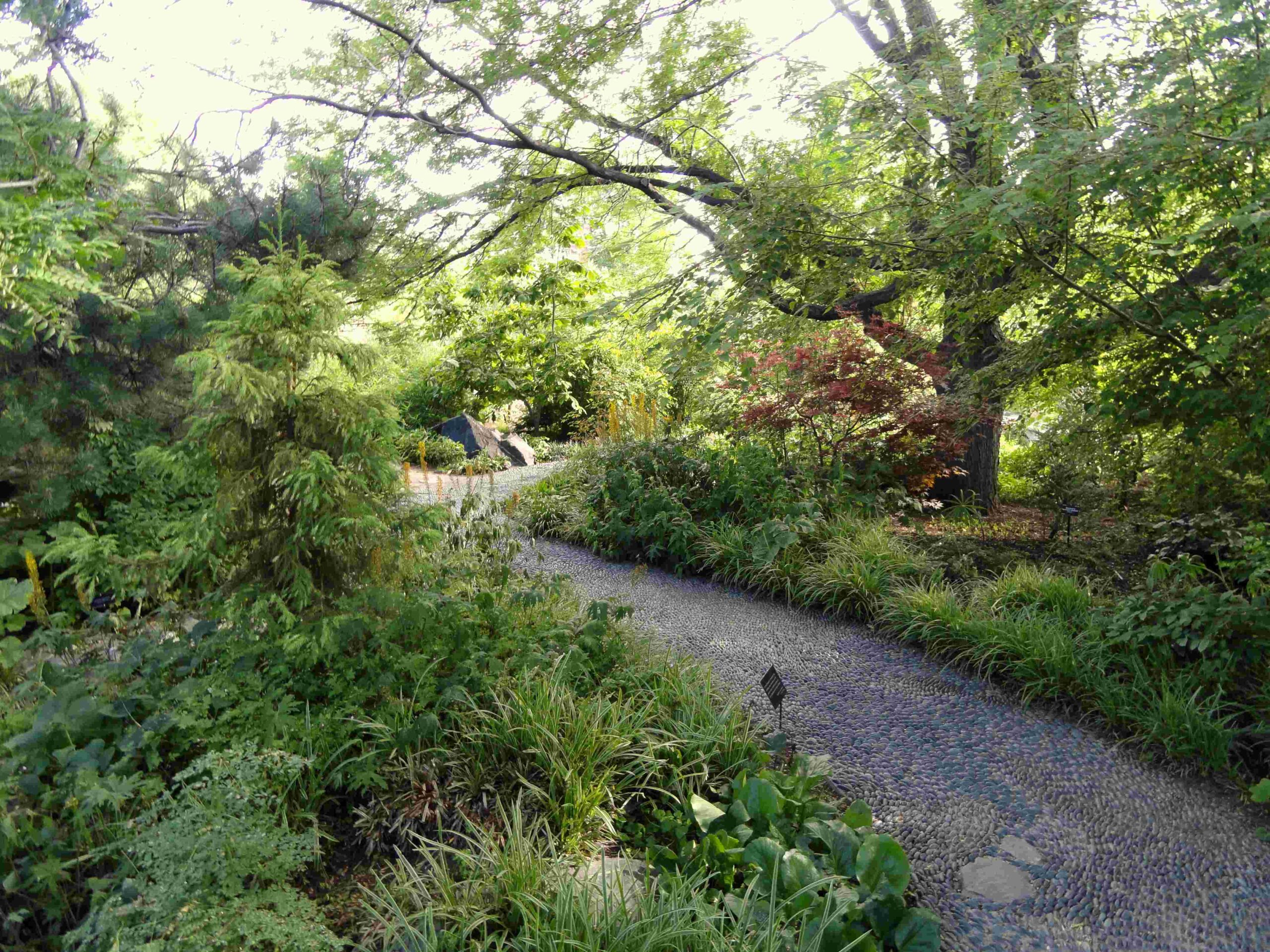The Alexander Calder exhibition at Denver Botanic Gardens was a remarkable fusion of art and nature. From April 28 to September 24, 2017, the gardens hosted ‘Calder: Monumental,’ featuring large-scale sculptures by the renowned American artist. This exhibition showcased Calder’s later works, spanning from 1956 to 1976, including both stationary and moving pieces. The sculptures were strategically placed throughout the gardens, creating a unique interplay between Calder’s abstract forms and the natural landscape.
What Were the Highlights of the Calder Exhibition at Denver Botanic Gardens?

The ‘Calder: Monumental’ exhibition at Denver Botanic Gardens featured several iconic pieces by Alexander Calder:
- Snow Flurry (1959): A delicate hanging mobile displayed indoors above a pool and garden, featuring white circles.
- Funghi Neri (1957): A stabile placed near the entrance and exit, hinting at movement without actually moving.
- Tripes (1974): A 12-foot tall stabile made of metal, bolts, and colored paint, dominating the surrounding landscape.
These sculptures were carefully selected to represent Calder’s later career and were on loan from various museums and the Calder Foundation.
How Did the Exhibition Integrate Art with Nature?

The integration of Calder’s sculptures with the Denver Botanic Gardens’ landscape created a unique visual experience:
- Natural Backdrop: The gardens provided a lush, organic backdrop for Calder’s geometric and abstract forms.
- Seasonal Changes: As the gardens changed with the seasons, the perception and context of the sculptures evolved.
- Scale Contrast: The monumental size of many sculptures contrasted with the delicate flora, creating striking visual juxtapositions.
- Light and Shadow Play: The outdoor setting allowed for dynamic interactions between the sculptures, natural light, and shadows.
What Was the Significance of Calder’s Work in the Context of Denver Botanic Gardens?
The exhibition of Alexander Calder’s work at Denver Botanic Gardens held several layers of significance:
- Cultural Enrichment: It brought world-class art to a public space, making it accessible to a wide audience.
- Interdisciplinary Experience: The exhibition bridged the gap between art and nature, encouraging visitors to appreciate both simultaneously.
- Educational Opportunity: It provided a chance for visitors to learn about modern sculpture in a unique setting.
- Artistic Innovation: The placement of Calder’s works in a garden setting offered new perspectives on his art.
How Did Visitors Experience the Exhibition?
Visitors to the ‘Calder: Monumental’ exhibition at Denver Botanic Gardens had various ways to engage with the artwork:
- Self-Guided Tours: Visitors could explore the sculptures at their own pace, following maps or informational signs.
- Guided Tours: Organized tours led by knowledgeable guides provided deeper insights into Calder’s work and its placement.
- Interactive Elements: Some sculptures, particularly the mobiles, offered interactive experiences as they moved with air currents.
- Photography Opportunities: The unique combination of art and nature created numerous photo-worthy moments.
What Were the Challenges in Hosting Such an Exhibition?
Hosting a large-scale sculpture exhibition in a botanical garden presented several challenges:
- Installation Complexity: Placing and securing monumental sculptures required careful planning and execution.
- Environmental Considerations: Protecting both the artworks and the garden’s flora during installation and throughout the exhibition was crucial.
- Weather Exposure: Outdoor sculptures faced exposure to various weather conditions, necessitating appropriate maintenance.
- Visitor Flow Management: Ensuring smooth visitor traffic while protecting both art and plants required strategic planning.
How Did the Exhibition Impact Denver’s Art Scene?
The ‘Calder: Monumental’ exhibition had a significant impact on Denver’s art scene:
- Elevated Profile: It brought international attention to Denver as a destination for world-class art exhibitions.
- Community Engagement: The exhibition attracted both art enthusiasts and casual visitors, broadening the audience for modern sculpture.
- Inspiration for Local Artists: The presence of Calder’s work inspired local artists and sparked conversations about public art.
- Cross-Institutional Collaboration: The exhibition fostered collaboration between Denver Botanic Gardens and other cultural institutions.
What Legacy Did the Exhibition Leave?
While the ‘Calder: Monumental’ exhibition was temporary, it left a lasting legacy:
- Appreciation for Sculpture: It heightened public appreciation for large-scale sculpture and its interaction with nature.
- Future Exhibitions: The success of this exhibition paved the way for future art installations at Denver Botanic Gardens.
- Educational Impact: It provided educational opportunities for students and art enthusiasts to study Calder’s work up close.
- Cultural Memory: The exhibition became a significant part of Denver’s cultural history and memory.
How Can Visitors Experience Art at Denver Botanic Gardens Today?
Although the Calder exhibition has concluded, Denver Botanic Gardens continues to host art exhibitions:
- Current Exhibitions:
- ‘River’s Voice: Textiles by Alexandra Kehayoglou’ (April 14 – December 8, 2024)
- ‘Elliot Ross: Geography of Hope’ (June 23, 2024 – February 2, 2025)
-
‘Shadow and Light: Patrick Marold’ (August 11, 2024 – January 5, 2025)
-
Upcoming Exhibitions:
- ‘Language Without Words: Works by Ash Eliza Williams’ (December 22, 2024 – May 4, 2025)
- ‘Seeds of Inspiration’ (January 18 – May 20, 2025)
- ‘Anna Kaye: Finding Light’ (February 11, 2025 – March 22, 2026)
Visitors can check the official Denver Botanic Gardens website for the most up-to-date information on exhibitions, ticket prices, and special events.
What Amenities Are Available for Art Enthusiasts at Denver Botanic Gardens?
Denver Botanic Gardens offers several amenities for visitors interested in art:
- Accessibility: Paved paths and ramps ensure easy access for all visitors.
- Guided Tours: Often available for special exhibitions (check availability for current shows).
- Parking: On-site parking facilities for visitors.
- Dining Options: Cafes and restaurants within the gardens.
- Gift Shop: Offering art-related merchandise and souvenirs.
- Educational Programs: Workshops and lectures related to current exhibitions.
The combination of these amenities with the natural beauty of the gardens creates an ideal environment for experiencing art in nature.
References:
1. Denverite: Alexander Calder’s work amid the Denver Botanic Gardens’ natural beauty
2. 303 Magazine: A Monumental Ode to Calder at Denver Botanic Gardens
3. Denver Botanic Gardens: Sculpture by Alexander Calder

